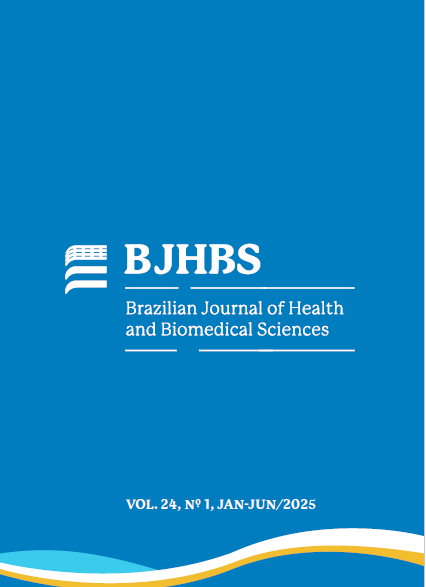Interictal balance changes in migraine- A stabilometric and diffusion tensor imaging study
DOI:
https://doi.org/10.12957/bjhbs.2025.93436Resumo
Cerebellar dysfunctions have been found in migraineurs, while ischemic lesions have been described to be more frequent in their posterior fossa. To examine balance abnormalities and anatomical cerebellar changes in migraine interictally, 48 patients (21 with aura — MWA; 27 without aura — MWoA) underwent an evaluation of their stance by computerized static stabilometry (CSS) and were compared with controls. The frequency and amplitude of swaying in both the anteroposterior and latero-lateral axes, as well as the area and velocity of oscillations were estimated with open and closed eyes. A subgroup of 10 individuals and 10 controls
was also examined with MRI and diffusion tensor imaging. Fraction anisotropy (FA) was obtained in nine regions of interest at the posterior fossa. Clinical parameters (age, age at onset, timespan of disease and frequency of attacks) were correlated with FA and CSS data. Subclinical impairment with greater lateral axis oscillation, especially in MWA, was observed. MWA patients were more dependent on visual input to control lateral sway than MWoA subjects. The anatomy of the cerebellum, especially at the dentate nuclei and middle cerebellar peduncles was comparatively impaired in migraine sufferers, as estimated by FA.
Downloads
Downloads
Publicado
Como Citar
Edição
Seção
Licença
Copyright (c) 2025 Brazilian Journal of Health and Biomedical Sciences

Este trabalho está licenciado sob uma licença Creative Commons Attribution-NonCommercial 4.0 International License.
Termo de transferência de direitos autorais/conflitos de interesses: após o aceite final do artigo para publicação, os autores deverão enviar o termo de transferência dos direitos assinados pelo autor principal representando cada um dos autores. Neste termo deverão ser declarados quaisquer conflitos de interesses.
